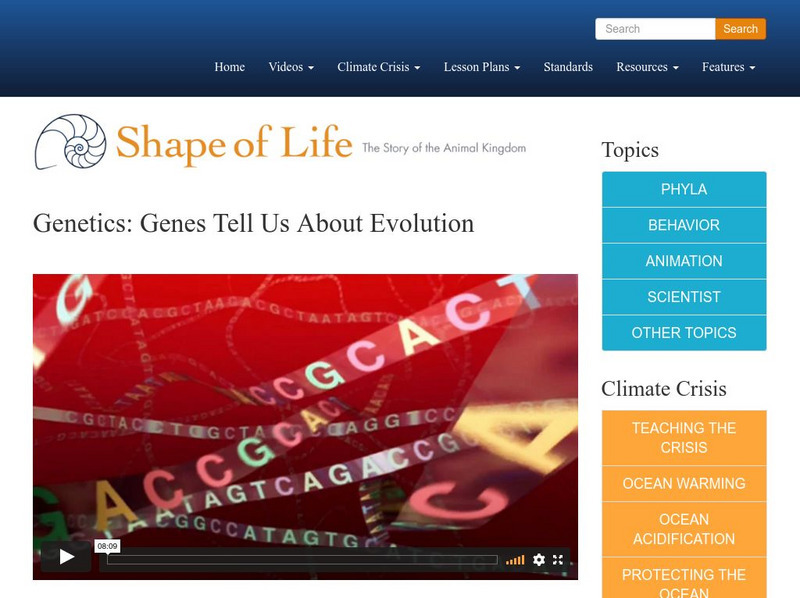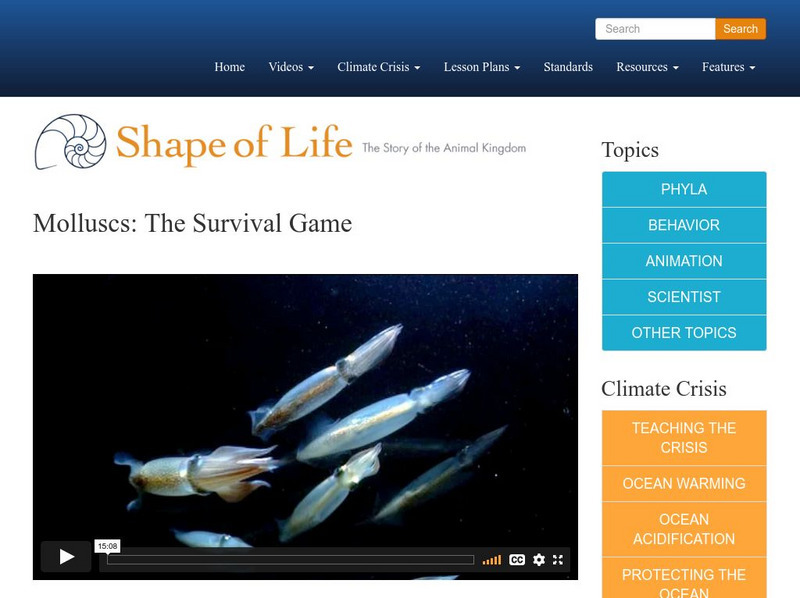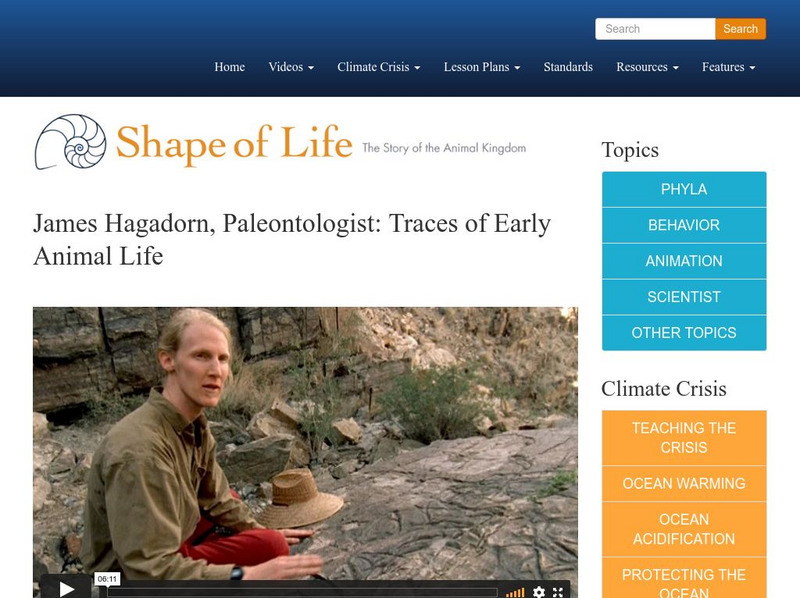Sea Studios Foundation
Shape of Life: Genetics: Genes Tell Us About Evolution
Mitch Sogin analyses the genes of a sponge in his search for the origin of animals. In order to sequence the genes, he extracts them from the cells. We see the threads of DNA in a test tube. He compares a similar gene found in all the...
Sea Studios Foundation
Shape of Life: Human Body Plan
The human body plan is bilateral with symmetrical sense organs, a fast responding brain, half the body weight in muscles, a powerful heart, and miles of arteries and veins and a brain that coordinates it all. All large active animals...
Sea Studios Foundation
Shape of Life: Paleontology: Paleontologists Study Tracks and Traces
Jenny Clack visits a site with fossilized tracks of an early tetrapod. She and her assistant hypothesize about what the animal was doing around 370 million years ago. [8:22]
Sea Studios Foundation
Shape of Life: Flatworm Animation: Body Plan
The flatworm's bilateral body plan has a head with a brain and stereo eyes that enable it to actively hunt. Its mouth and pharynx are in the center of its underside. With no circulatory system, the gut distributes food to all parts of...
Sea Studios Foundation
Shape of Life: Marine Arthropods: A Successful Design
Learn through this video about marine arthropod such as crabs, shrimps, and lobsters. Understand that these animals have jointed appendages that are both strong and flexible which they use for sensing the world, feeding, and moving....
Sea Studios Foundation
Shape of Life: Molluscs: The Survival Game
An animation showing that molluscs' basic body plan includes a foot for mobility; a mantle that secretes a shell and a radula for eating. Learn that molluscs today show many variations on this original body plan. An abalone escapes a sea...
Sea Studios Foundation
Shape of Life: James Hagadorn, Paleontologist: Traces of Early Animal Life
In the Inyo Mountains of California, paleontologist James Hagedorn looks for clues in the rocks for organisms that lived over 500 million years ago,a hard thing to do since most organisms weren't preserved. Watch him in this video as he...
Sea Studios Foundation
Shape of Life: Chordate Animation: Amphioxus to Vertebrate Body Plan
Amphioxus' body plan shows what a vertebrate's ancestor might have looked like with a nerve cord, a brain, gill slits, segmented muscles and a notochord that would become the discs in the backbone. [1:31]







